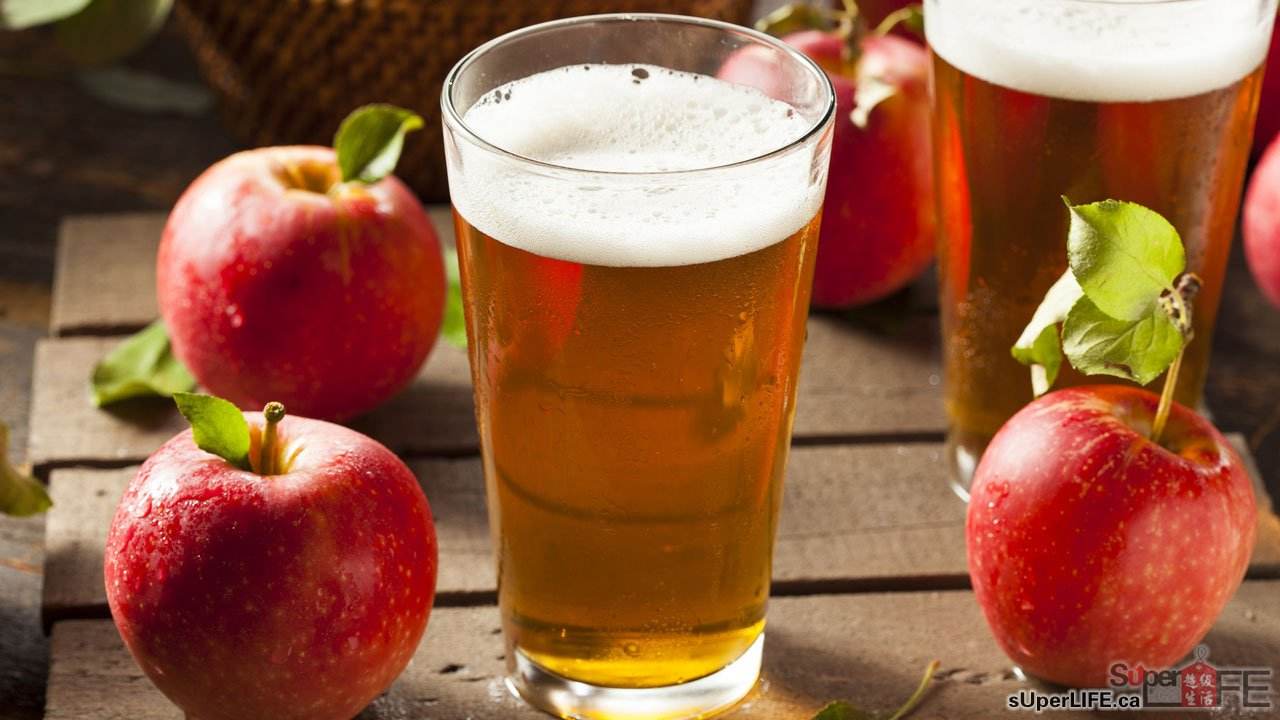I’m here in the beautiful classroom for northern brewer’s Minneapolis store today we’re gonna talk about how to make hard cider the easy way we’re gonna do it in 3 simple steps the first step is all about cleaning and sanitation cleaning is the most important part because it helps to remove any organic soils from the service of your fermenter sanitation is really key because it helps to kill any kind of living used or micro organisms that might end up affecting the flavor of our cider down the road northern brewer carries a couple of different products that work really well one is going to be easy clean and another is one step these products will help to clean and sanitize and they do it all in one easy process we get questions all the time about dish so can we use dish soap for cleaning and sanitation you can but it’s typically not recommended because dish soap is going to have an aroma to it and maybe be oil based those oils can get into your fermenter and create a film and sometimes a residue that could end up in your final projects.
So let’s get started let’s clean everything up. 6. Now that we’ve cleaned and sanitized or fermenterit’s time to move on to step 2
step 2 is all about selecting your juice you don’t need to own an orchard in order to make hard cider you can use any store bought apple juice or even an apple cider but there’s a couple of things that you want to be aware of look at the label a couple of things are important you’re gonna look at whether the juice is pasteurized or not most use you get from the grocery store is going to be pasteurized I recommend getting a pasteurized juice because it ensures that there’s no living organisms are wild beast already present in the jug one other thing you want to look at turn it over and look at the ingredients list you’re gonna want to make sure that your cider or juice that you’re using is not going to be stabilized now stabilize is not a word that you’ll see on the label but one thing that you might see is sulfite you might also see sorbate or bends await these are all stabilizers that help to prevent fermentation for juices that you’re going to drink without any alcohol in them as you get them from the grocery store that’s great but if we want to ferment these juices we need to make sure that there’s nothing that’s going to inhibit the fermentation of the yeast we pitch into the fermenter.
Step 3 pitching your yeast you got a couple of different options you can use some of the more traditional use that you might look at 1 is going to be the why used 4766 does a great job to ferment out all the sugars that are available gives you a nice cider character without giving too many additional flavors another option you might have is by the white labs company the 775 by white labs is an English cider used very clean dry fermentation and really nice for your traditional English style ciders 1 of my favorite options that I like to use is the Red Star court to block dry yeast I find that this used gives a little bit residual sweetness which I like it doesn’t ferment out completely dry and gives retains a nice apple character
in the end so if you’re working with specific varietals this is a great used to help drop out that specific flavor some other options you might consider might be a Belgian ale yeast maybe an English ale yeast and of course white wine and even red wine he’s will work great for this application. If you want to try something a little bit funky give it a little bit more character you can always try maybe a French saison yeast like why he’s 3711 or you could even move into 1 of the more sour cultures like the Y. east Roeselare bland that’s going to contain Secker my sis Lactobacillus pedia caucus and also Brittonum I seize your apple juice is probably going to ferment to about 4 to 5 percent alcohol if you don’t add any additional sugar if you’d like to boost that alcohol a little bit you have to add some more from animals you can do this a couple of different ways you can use either priming sugar corn sugar bottling sugar in a larger quantity.

if you’d like a couple of pounds on a 5 gallon batch would boost your gravity a couple of a couple percentage points probably you could also use table sugar keep in mind the corn sugar and the table sugar which is sucrose doesn’t have a lot of character to it so you’re going to get alcohol but you’re not going to get a depth or complexity if you’re looking for more depth and complexity you might try brown sugar which is cane sugar or you might also try maybe a Belgian candi sugar which is going to be more of a beet sugar and will give a little bit more flavor profile as well some other considerations you might make maple syrup is very common and if you want to give it a nice twist maybe try some agave syrup.
If you’d like to look into adding some fruit or maybe some spice into your cider you have a couple of options there too fresh fruit is always going to be the best but you want to make sure that you’re not adding too much wild yeast that might be on the fruit already some options that you have to avoid that would be using any of our peer raise or any of our fruit bases some nice flavors that go along with the apple cider might be apricot or pear cherry or even black currant if you’re looking at maybe adding some spices you have some options there too some things that work really well might be candied ginger maybe some vanilla bean and also perhaps some cinnamon sticks.
Most starters on the market are carbonated and you can carbonate yours as well by adding a small amount of priming sugar to the bottle just like you would to bottle conditioned beer and then waiting one to 2 weeks for the carbonation to build up. If you prefer a sweeter cider I recommend letting your fermentation finish out all the way and then back sweetening it with some kind of sugar maybe a wine conditioner and you can use additional apple cider or even honey if you’re curious about backs weakening especially carbonated aback sweeten cider check out bring TV episode 67 for a lot more in depth information about how to accomplish that all right let’s get started add some shoe store for mentor and pitcher used. So today will pitch the Red Star court to block. Now that I filled up the fermenter in pitch my used we’re gonna wait one to 2 weeks your fermentation should finish out and about that much time at which point you can go into packaging and bottles. So let’s recap step number one clean and sanitized step number to select your juice put it in your fermenter step number 3 select your yeast pitch that in your fermenter in one to 2 weeks your fermentation is going to be finished and you’ll be ready for bottling if your bottle conditioning add your sugar and wait another one to 2 weeks cider made easy in 3 steps cheers. Okay. What’s tartar.




